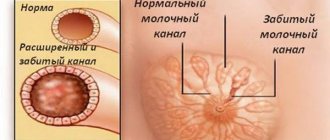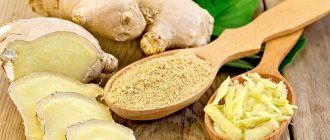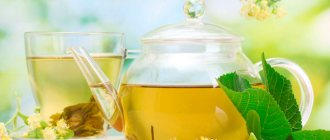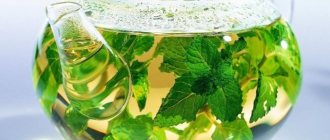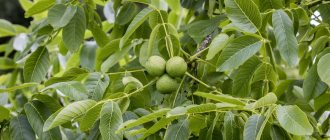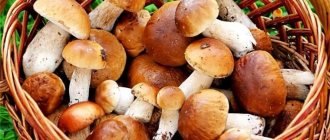About the benefits of breastfeeding
Discussions about the benefits of breastfeeding have long died down in the medical community, and now even infant formula manufacturers consider it their duty to warn consumers that the ideal food for babies is mother's milk.
Its chemical and biological composition is optimal for the immature intestines of a newborn. It best satisfies the baby's nutritional needs and also gives the baby reliable protection against infections.
And the process of breastfeeding itself brings a lot of joy to the mother, promotes better contact and has a beneficial effect on the mental development of the child.
But even when a young mother realizes all the benefits of breastfeeding, her sincere desire to breastfeed her baby is often crossed out by the problem of lack of milk.
How to set up the process?
Data from numerous studies show that only 5% of women cannot breastfeed a child for physiological reasons.
In most cases, all that is required for long and successful breastfeeding is the correct initiation and maintenance of the lactation mechanism.
Basic Rules:
- early breastfeeding;
- offer your baby breastfeeding on demand, not on an hourly basis;
- mandatory night feedings;
- feeding a newborn exclusively with mother's milk, without adding infant formula to the diet;
- the mother’s peace of mind and her confidence in her ability to feed the baby.
If these principles are followed, the process of breastfeeding occurs naturally and harmoniously, and artificial measures to increase lactation are usually not required.
When should you increase lactation?
There are situations when the amount of milk needs to be increased artificially. This usually happens when mistakes were made at the stage of launching lactation mechanisms.
During a caesarean section or postpartum complications in the mother, the baby is fed formula for the first few days or weeks of his life, so switching him to breastfeeding requires considerable effort.
But even with a properly adjusted breastfeeding mechanism, there are situations when the amount of milk needs to be increased.
The development and growth of a child occurs in leaps and bounds during certain periods (usually the 3rd-6th week, as well as the 3rd, 4th, 7th, 8th months). At this time, the baby’s need for milk increases sharply, and the mother’s breast does not have time to instantly adapt to the increased needs. Typically, such lactation crises last 3-4 days, and the problem is easily resolved by more frequent breastfeeding.
Mild natural remedies will also help improve lactation.
Let's look at the indicators by which a young mother can determine that her baby really doesn't have enough milk and it's time to take action:
- the child’s weight increases slightly over a long period of time or remains at the same level;
- after feeding, the baby does not calm down, continues to be nervous, and does not let go of the breast;
- the number of wet diapers per day is significantly reduced;
- The baby's urine becomes dark in color and has a pungent odor.
Herbs to help
If a mother has realized that the problem of lack of milk is really urgent for her, along with other methods, she can use the following herbs to enhance lactation:
- nettle – improves the quality of milk, helps restore the uterus;
- fennel - in addition to stimulating lactation, it has a beneficial effect on the digestive tract and reduces gas formation, so it is recommended to use it in combination with fenugreek to minimize the side effects of the latter;
- raspberry leaves - are high in niacin and other vitamins, help restore the uterus after childbirth;
- borage (borage) – normalizes the functioning of the adrenal glands, due to which lactation increases;
- alfalfa (alpha-alpha grass) is another herb useful for nursing mothers, it is high in vitamin K, and therefore stops bleeding;
- fenugreek (fenugreek or helba) is one of the most powerful lactogenic agents; for example, it is even used to produce milk in women who feed adopted children;
- thistle (Knikus pharmaciens) – additional bonus: treatment of mild forms of postpartum depression, beneficial effect on the health of the liver and digestive system;
- goat's rue (galega or goat's rue) - this herb can increase milk production by 50%;
- chamomile - rarely causes allergies, has a mild sedative effect;
- hops – soothes, reducing the risk of milk loss for psychological reasons.
Other herbs to increase lactation that rarely cause side effects when the dosage is followed:
- dandelion;
- dill;
- anise;
- caraway;
- sweet clover;
- spirulina;
- verbena.
In addition to the lactogenic effect, herbs have an additional positive effect on the body of mother and baby. For example, cumin, dill and anise are effective against colic in newborns.
In addition, the listed plants will enrich the diet of a nursing woman with phytonutrients, vitamins and minerals.
Dangerous plants
Doctors do not recommend using the following herbs during lactation:
- coltsfoot - the plant contains alkaloids that can cause poisoning in children;
- elecampane - promotes a rapid decrease in lactation;
- valerian - has a calming effect, but provokes severe allergies, the child becomes lethargic or, conversely, too excited;
- wormwood - disrupts the functioning of the gastrointestinal tract, causes allergies, convulsions;
- St. John's wort - contains substances that can cause respiratory and digestive system disorders in the baby;
- ginseng - provokes dizziness and nausea.
Methods of use
Today, pharmacies and supermarkets offer a wide selection of teas and infusions that increase milk production for nursing mothers.
The most convenient form is granulated instant teas.
Their disadvantage is that, in addition to the herbs themselves, they also contain various additives, sugars and flavorings that can cause allergies in the baby.
In addition, the technology for manufacturing granules involves multi-stage processing of raw materials, and as a result, most of the valuable components lose their beneficial properties.
You can purchase packaged supplements to enhance lactation; they are also quite convenient to use. However, they have a serious disadvantage: the raw materials are of insufficient quality.
If you have time, the best option would be to make lactogenic mixtures yourself, using herbs from the pharmacy or your own preparations. The advantage of this method is that you will know exactly what components are included in your tea, and you will be able to select the composition and proportions yourself.
Please note that you should not include too many herbs at the same time. It’s better to start with one or two components and then experiment with adding new ones, focusing on your reaction and the baby’s reaction.
Pharmacy teas
If you don’t have the time or desire to make herbal infusions yourself, you can purchase ready-made ones. Pharmacies sell teas to stimulate lactation. When choosing them, you need to pay attention to the composition. Popular pharmacy teas for nursing women are listed in the table below.
Lactation tea LaktoMama
| Collection name | Tea composition | Approximate cost in rubles |
| Fleur Alpine Organic “For nursing mothers” | lemon balm, peppermint, galega, fennel, nettle | 220-300 |
| Lactavit | nettle, fennel, cumin, anise | 165-270 |
| Fleur Alpine Organic “Berry collection with prebiotics” | blueberries, rose hips, cumin, lemon balm, inulin, galega | 240-310 |
| Humana Still-Tee to increase lactation | fennel, hibiscus, verbena, blackberry, raspberry leaves, fenugreek, galega | 150 |
| BIO LactoMama | fennel, oregano, nettle | 130 |
| HiPP organic tea for nursing mothers | cumin, fennel, anise, lemon balm, lemon verbena | 290-300 |
| Grandma's basket | anise, fennel, cumin, nettle, lemon balm | 95-110 |
| Bebivita tea | fennel, lemon balm, anise, cumin | 150 |
| Nestik | chamomile, galega, lemon balm, rosehip | 115 |
| Leros Baby “Tea for nursing mothers” | galega, cumin, fennel, lemon balm, plantain, golden rod | 85 |
| Lactaphytol | fennel, cumin, stinging nettle, anise | 190 |
| Weleda | cumin, anise, knotweed, fenugreek, fennel | 650-850 |
We recommend reading: Why does the clitoris hurt after childbirth and when to sound the alarm?
Collection recipes
Here are some popular recipes for herbal teas that increase the amount of breast milk.
- 2 tbsp. l. nettle leaves and 1/2 tsp. dill seed, pour 1 liter of boiling water, leave for one hour. Take 1 tbsp. l. 3 times a day.
- Take 1 tbsp. l. nettle herbs, lemon balm and sweet clover, fennel flowers, add 1 tsp. dill seed. Pour the resulting mixture into 3 liters of boiling water, let it brew and drink like tea throughout the day.
- Take anise, cumin, nettle and dandelion root in equal proportions. Brew at the rate of 1 tsp. mixture per glass of boiling water.
- 1 tsp. Brew anise fruits and leave for one hour. Take 3-4 times a day, 2 tbsp. l.
- Pour 20 g of dried nettle leaves with a liter of boiling water. Drink 1 tbsp. l. 3 times a day.
These and other herbal recipes, if taken with all precautions, will help new mothers increase milk production and maintain breastfeeding for a long time.
Aids to increase milk supply
These measures are used only in combination with basic measures to increase lactation and involve influencing the mother’s body by adjusting the diet and introducing substances (lactogens) into it that increase the amount of milk.
In most cases, the mechanism by which lactogens influence milk supply is unknown or little known. Indeed, in order to increase the amount of milk and increase the efficiency of its return, it is necessary to directly or indirectly influence the biosynthesis of prolactin and oxytocin - hormones that regulate the process of breastfeeding. However, many mothers note that after taking lactogens, with a seemingly inexplicable mechanism of action, lactation increases.
It is possible that this is due to the effect of self-hypnosis, which, by creating a favorable psychological mood, plays an important role in the production of the hormone oxytocin, which is responsible for the release of milk from the mammary gland.
Drugs to increase lactation
Domperidone (Motilium)
Taking domperidone is the most effective and clinically proven method that can affect the increase in lactation.
Domperidone (TM Motilium, Motilak, etc.) is a drug that improves gastrointestinal motility and has an antiemetic effect. A side effect of its use is an increase in the production of prolactin by the pituitary gland and the suppression of dopamine, the biochemical precursor of adrenaline (its effect on lactation was written above).
Important! Domperidone should not be used as a first-line drug to increase lactation. Its use is justified only in the case of an integrated approach to solving the problem of lack of milk during breastfeeding.
When can domperidone be used to increase lactation?
- Inability to attach a baby to the breast while maintaining lactation by pumping.
- Decreased milk production due to the use of birth control pills containing estrogen or progesterone only. In this case, you should stop taking oral contraceptives before taking domperidone.
- To resume lactation after a break. In this case, you should not expect significant effectiveness from the drug; the absence of breastfeeding and lost time cannot be replaced by anything.
- Transition from mixed feeding to breastfeeding.
Side effects
Side effects of domperidone are quite rare and most often manifest themselves in headaches, abdominal cramps, dry mouth and changes in the menstrual cycle. The amount of the drug entering breast milk is very small and cannot affect the baby.
Directions for use and doses
The most optimal dosage is 10 mg 3 times a day 30 minutes before meals. Increasing the dosage of the drug, according to studies, does not significantly affect milk production.
An increase in lactation as a result of taking domperidone can be noticed within 3-4 days after the start of treatment, but this indicator is very individual. Sometimes it takes 4-6 weeks to finally conclude that the medication is useless.
Withdrawal of the drug
If you have achieved the desired goal and your expected lactation has established, the drug is discontinued according to the following scheme:
- Start taking one less domperidone tablet per day.
- If your milk supply does not decrease within 4-5 days, remove another tablet.
- Continue this way until you stop taking the drug altogether.
- If your milk supply decreases, return to the previous dosage and maintain it for another two weeks.
- If you are unable to completely stop taking the drug by following the regimen described above, you will at least stick to the minimum dosage for yourself.
Another drug, metoclopramide (Maxeran), has a similar effect in increasing prolactin synthesis. But its use is limited by a large number of side effects, while domperidone has practically no side effects.
Dietary supplements and homeopathic remedies
They contain plant extracts that stimulate lactation in the form of tablets, capsules or granules. Additionally, components with other useful properties can be added to them.
- Lactogone. Ingredients: carrots, ginger, nettle leaf, royal jelly, dill fruits, oregano herb, ascorbic acid, potassium iodide.
- Shirafza. Contains aqueous-alcoholic extracts of medicinal plants (fennel, cumin, fenugreek, dill) in the form of capsules.
- Mlekoin. Active ingredients: meadow lumbago, sacred vitex (Abraham tree), stinging nettle.
Products that increase lactation
Adjusting the diet with foods is a less effective method compared to taking domperidone, but, nevertheless, it is also not without meaning when fighting to maintain and increase lactation.
It is known that consuming foods rich in the essential amino acid tryptophan improves our mood and helps suppress dopamine, which inhibits the secretion of prolactin. Accordingly, milk production will increase due to increased prolactin production. In addition, dopamine is a precursor to adrenaline, which inhibits the production of oxytocin, the hormone responsible for breast milk release.
Tryptophan content in food
| Product | mg/100 g | Product | mg/100 g |
| Red caviar | 960 | Beef | 220 |
| Dutch cheese | 790 | Salmon | 220 |
| Peanut | 750 | Fat cottage cheese | 210 |
| Almond | 630 | Chicken eggs | 200 |
| Soya beans | 600 | Buckwheat | 180 |
| Processed cheeses | 500 | Carp | 180 |
| Turkey, rabbit | 330 | Oatmeal | 160 |
| Squid | 320 | Pasta | 130 |
| Sunflower seeds | 300 | Wheat bread | 100 |
| Horse mackerel | 300 | Rice | 80 |
| Pistachios | 300 | Milk, kefir | 40 |
| Peas, beans | 260 | Potato | 30 |
| Atlantic herring | 250 | Beet | 10 |
| Veal | 250 | White cabbage | 10 |
| Beef liver | 240 | Carrot | 10 |
Foods rich in polysaccharides, in particular beta-glucan, can enhance the secretion of prolactin . There are especially many polysaccharides in cereals (barley, oats, rice), yeast, and potatoes.
Important! Foods rich in the essential amino acid tryptophan and polysaccharides, in particular beta-glucan, can increase breast milk production.
Industrially produced balanced milk drinks
This refers to dry mixtures for preparing drinks, produced by industry, to enrich the diet of pregnant and lactating women. Since manufacturers try to include in their composition all the most important substances, including proteins rich in essential amino acids, in particular tryptophan, the effect of which on the synthesis of prolactin is described above, then to some extent these mixtures will also help increase lactation. But still, their main function is to balance the diet.
Balanced milk drinks for pregnant and lactating women, enriched with vitamins and minerals, according to information from manufacturers, help improve the quality of breast milk, establish stable lactation and have a positive effect on the recovery of a woman’s body after childbirth.
- Femilak.
- MD mil Mom Premium.
- Dumil Mama plus.
Balanced milk drinks for nursing women, enriched with vitamins and minerals with herbal extracts that stimulate lactation:
- Milky Way
- Lactamil
Lactogonic teas
It is believed that decoctions and infusions of some herbs stimulate lactation, but when consuming them on your own, we must not forget about the possible negative impact of the components of plant materials on the baby through breast milk. Therefore, it is most reasonable to use herbs and herbs that are specifically produced by manufacturers for this purpose.
Positive sides
- Decoctions and infusions of individual herbs are somewhat inferior to herbal infusions, since by selecting the components of the herbal infusion in a certain proportion, manufacturers have the opportunity to soften or enhance the taste characteristics of the finished drink, which cannot be achieved when using one type of herbal raw material.
- Their composition, along with herbs that affect lactation, includes herbs (anise, fennel), which properly improve the functioning of the baby’s intestines. At the same time, if an individual intolerance to one of the components of the collection occurs, it will be difficult to find out its cause, whereas in the case of a decoction or infusion of parts of one plant, this will not cause any difficulties.
- Natural plant materials have a small amount of sugars, so such drinks are suitable for women who limit the amount of sugars in their diet.
Undoubtedly, along with the positive aspects, decoctions and infusions of herbs (infusions) have their drawbacks, which consist in the need for time-consuming preparation.
Important! Like any medicine, herbs require a certain duration of use. In most cases, they are recommended to be used in courses of 2-4 weeks with breaks of 2-3 weeks.
Below are some selected herbs and herbal infusions used to promote lactation.
Selected herbs
- Fenugreek seeds. A spice used in India and the Middle East. Increases milk supply by stimulating the sweat glands (the mammary gland is a modified sweat gland). 1 tsp. seeds pour 1 tbsp. water and cook at low boil for no more than 5 minutes, cool, strain. You should drink it in two doses during the day.
- Dandelion roots. Finely chop fresh dandelion roots, take 1 tsp. raw materials, place in a thermos and pour 1 tbsp. boiling water, leave for about 1 hour, strain. Drink 1 tbsp. infusion in three doses during the day.
- Verbena medicinal herb. 1 tsp. dry herbs pour 1 tbsp. boiling water and leave in a sealed container for 30 minutes. Strain. Drink one sip every hour. Additionally, verbena infusion has a calming effect and promotes rapid contraction of the uterus in the postpartum period.
- Stinging nettle leaves. 1 tsp. dry herbs pour 1 tbsp. boiling water and leave in a sealed container for 15 minutes, strain. Drink ¼ glass 3-4 times a day. Additionally, the infusion of nettle leaves is a source of vitamins A, C and group B and a source of iron.
- Galega herb (goat's rue officinalis). Belongs to the same family as fenugreek. To prepare the infusion 1 tbsp. l. herbs pour 1 tbsp. boiling water and leave for two hours, filter. Drink 2 tbsp. three times a day.
Herbal infusions
- Fleur Alpine (Fleur Alpine) Organic “For nursing mothers.” Ingredients: fennel fruits, lemon balm leaves, galega herb, nettle and peppermint leaves.
- Fleur Alpine (Fleur Alpine) Organic “Berry collection with prebiotics”. Ingredients: rose hips, blueberries, galega herb, caraway fruits, lemon balm leaves, inulin (prebiotic).
- Bebivita herbal tea for nursing mothers . Ingredients: lemon balm leaves, fennel fruits, caraway fruits, anise fruits.
- Lactaphytol. Ingredients: fennel fruits (dill), caraway fruits and anise, as well as stinging nettle leaves.
- Lactavit. Ingredients: anise fruits, nettle leaves, dill (fennel) fruits, caraway fruits.
- Grandma's basket. Anise-fennel tea. Ingredients: fruits of anise, fennel, caraway, nettle leaves, lemon balm, clover grass.
- HiPP organic tea for nursing mothers. Ingredients: anise, fennel, cumin, lemon verbena leaves, lemon balm leaves.
Instant teas
The industry of such products has become widespread in our time. After all, compared to ordinary herbal teas, they taste more pleasant and are easier to prepare. To apply herbal extracts, natural flavors and to give a sweet taste, such teas use sucrose, glucose (dextrose), maltodextrin, which are sugars, so if for some reason you avoid consuming large amounts of sugars, you should take this into account.
Important! The effect of lactogenic teas is enhanced when consumed warm, which increases the production of oxytocin, which stimulates milk production from the breast.
- Humana Still-Tee to increase lactation . Contains extracts of hibiscus, fennel, blackberry, verbena herb, raspberry leaf extract, fenugreek, galega herb extract. Helps restore the body after childbirth, has a beneficial effect on the functioning of the gastrointestinal tract of a nursing mother, helps satisfy the increased need for fluid during breastfeeding, contains vitamin C.
- TEMA TIP-TOP tea for nursing mothers. Contains extracts of anise, Italian dill, thyme, caraway, lemon balm, nettle, galega.
- HiPP with anise, fennel and cumin to stimulate milk production. Contains extract of lemon balm, nettle, caraway, anise, fennel.
- Bebivita tea for nursing mothers. Contains extracts of fennel, cumin, anise.
Side effects
If you suffer from a lack of milk, this does not mean that your first action should be to make an herbal mixture.
Be sure to check with your doctor about possible side effects. This will help reduce the risk of allergies and other unpleasant symptoms.
- Fenugreek causes increased gas formation in some nursing mothers. And its ability to lower blood sugar levels is a direct contraindication for diabetics. In some cases, this herb also causes diarrhea. Is a strong allergen, especially if you suffer from a negative reaction to peanuts.
- Borage is generally not recommended for long-term use by nursing women, as it contains an alkaloid that is harmful to the liver.
- Hops, when taken for a long time, causes severe depression, so it is also not included in the list of herbs recommended for a nursing woman.
- Fennel can also cause allergies, including seizures and breathing problems in infants.
- Many people confuse anise with star anise. The second is extremely dangerous for the baby’s health, so taking it while breastfeeding is strictly prohibited.
A clear understanding of the reasons for decreased lactation will allow you to more accurately select the most effective herbs that increase milk production.
Prohibited herbs when breastfeeding
Some plants negatively affect the production of breast milk and the health of the baby. It is important to know the list of such herbs and avoid their use during lactation.
The following plants are prohibited for a nursing mother:
- coltsfoot . The grass contains alkaloids that are harmful to children;
- ephedra _ The plant contains ephedrine, which causes headaches, heart palpitations, nausea and vomiting, and problems in the respiratory system of infants;
- buckthorn _ Helps with postmenopausal disorders, removes cardiac and renal edema. Often used to normalize stool. But during breastfeeding, this herb can cause serious adverse reactions in the child and mother;
- elecampane _ It has a powerful diuretic effect and reduces breast milk production. After drinking elecampane decoction for a week, lactation stops;
- wormwood _ Contains a substance toxic to the body of a newborn. May cause problems with the stomach and intestines, hallucinations, allergies, and seizures. Wormwood gives breast milk a bitter taste;
- valerian _ It has a pronounced sedative effect and helps with insomnia. But such a plant is dangerous for babies: it can provoke an allergic reaction, persistent constipation, stimulate or inhibit the functioning of the central nervous system;
- ginseng _ The components of this plant have the ability to accumulate in body tissues, increase blood pressure, cause vomiting and dizziness.
Licorice and sophora are also prohibited during lactation. Teas with parsley, chickweed, and sorrel are not recommended. They suppress breast milk production and have a negative impact on the baby.
